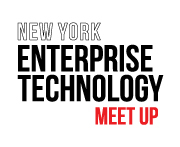
It’s all too easy to get caught up in the glamour of consumer technology startups. Just recently, Facebook acquired Instagram for a cool billion dollars, and before that, Zynga acquired OMGPOP for a couple hundred million.
So why not just make a nifty mobile app or game, and then flip it for a few hundred million bucks? The answer is that, as the consumer space gets more crowded, it will become tougher and tougher to stand from the pack.
Which leads to the point of this post: you should reconsider how you think about enterprise technology. Not only does it power America’s longstanding corporations, but in fact the hottest consumer facing companies such as Facebook, Twitter, Tumblr and Google all rely on enterprise technology to function at their scale.
Whether you’re running real-time analytics on massive volumes of data like Twitter and Zynga are doing with Vertica’s analytics platform, fostering collaboration while socializing the enterprise like Yammer does for Soundcloud, Paypal, and eBay, or utilizing smart lights from Redwood Systems in your datacenter as Facebook and Google do, enterprise technology permeates into more companies than you’d traditionally expect.
![]()
The are many reasons why entrepreneurs should research pain points experienced in enterprise IT, and think about creating an enterprise technology product to go after this market. It truly is the perfect time to embrace the enterprise. The market is large, timing is right and plenty of support is ready and waiting for you.
Large Market
Enterprises are full of legacy software that is in the process of being uprooted with new tech offerings, whether in SaaS talent management, collaboration tools, or ERP (enterprise resource planning). New trends from consumer technology can be applied to seemingly mundane enterprise tasks which can breathe new life into them. For instance, check out True Office which offers gamification of compliance training.
http://vimeo.com/ibe/abouttrueoffice
These markets are all multi-billion dollar opportunities, and as Aaron Levie, CEO of the enterprise cloud content management platform Box put it back in 2010, “enterprise tech is sexy,” and lately it seems everyone wants to ask it to the dance.
Levie commented on consumer tech, saying, “I mean, these are totally cool areas of innovation, but when compared to $3.4B software acquisitions and SaaS stocks up 60%, or over-performing IPOs and more rumored to come, I’m not sure the world of enterprise software is that lacking in spice.”
Timing
Historically, legacy systems were difficult to replace because of the huge implementation fees associated with doing so, and thus enterprises typically upgraded to new offerings when their older products stopped meeting their needs. However, enterprises today are proactively seeking new offerings such as those from SaaS vendors because the implementation is cheaper and new user experiences make them much easier to use, thereby increasing engagement across a firm.
 Take for instance Workday, with customers like Salesforce.com and Silicon Valley Bank, which is named a leader in Human Resource Management by Forrester Research and now competes with the likes of Oracle’s Peoplesoft. Or Box, which is taking on Microsoft’s Sharepoint with the goal to make online file sharing and collaboration easier for enterprises.
Take for instance Workday, with customers like Salesforce.com and Silicon Valley Bank, which is named a leader in Human Resource Management by Forrester Research and now competes with the likes of Oracle’s Peoplesoft. Or Box, which is taking on Microsoft’s Sharepoint with the goal to make online file sharing and collaboration easier for enterprises.
When it comes to UX/UI skills from the consumer web, all of these tools are ripe to be applied to enterprise offerings as mobility continues to be an essential part of a firm’s strategy and tablets such as iPads are increasingly used. There is a huge trend called “consumerization of IT,” which essentially means that employees demand similar experiences to the technology they are using outside of the office. Who better to help apply these lessons to the enterprise than someone with a mastery of consumer tech?
Now, more than ever, there is room for out of the box thinking as well. Take bit.ly for example, which brought together all of its data related to shortening urls, and now has an enterprise product for reputation monitoring across the web.
Support
Of course it needs to be stated that founding an enterprise startup is no easy task. It is tougher to develop a product that can scale to meet an enterprise’s needs and also be secure. The sales cycles take months, as opposed to on the consumer side where you can make a website or an app and have customers in minutes.
However, more and more tools are being put in place to help entrepreneurs tackle enterprise-grade problems.

First of all, incubators are being formed targeting the enterprise. In New York for instance, the NYC Investment Fund is in the second class of its FinTech Innovation Lab, which targets financial services, and in Washington D.C., a new accelerator called Accelerprise has been formed to focus across the board of enterprise technology. They provide industry mentorship from people who understand your problem market. Additionally, their partnerships with enterprise companies gets you in the door at large corporations for sales meetings – this is unparalleled access and a terrific opportunity to take advantage of.
Also, a nice bonus is that unlike their consumer counterparts which are being flooded with “me too” app ideas and have miniscule acceptance rates (i.e., TechStars accepted 1% of applicants for its Spring 2012 class), enterprise incubators are just beginning to blossom and are much easier to get into.
 There are also meetups which are creating a community around enterprise technology. Take for instance my group, the NY Enterprise Technology Meetup. We foster innovation in the NY enterprise technology ecosystem through promoting early stage technology companies, supporting entrepreneurs, educating companies on how to work with enterprises, and creating an environment where entrepreneurs, investors, and businesses can all network and learn from one another. Having this support system and community enables people to stay abreast of new trends, connect with people to partner with on ideas, and eventually meet investors to back them.
There are also meetups which are creating a community around enterprise technology. Take for instance my group, the NY Enterprise Technology Meetup. We foster innovation in the NY enterprise technology ecosystem through promoting early stage technology companies, supporting entrepreneurs, educating companies on how to work with enterprises, and creating an environment where entrepreneurs, investors, and businesses can all network and learn from one another. Having this support system and community enables people to stay abreast of new trends, connect with people to partner with on ideas, and eventually meet investors to back them.
Right now it’s easy to get caught up in the hype of the consumer web, but it’s time for innovators to open their eyes to the next big thing: a new era for enterprise technology. The scene is surging with potential and is bound to be on more people’s minds soon, so why not get there first before the space gets crowded?
Get the TNW newsletter
Get the most important tech news in your inbox each week.





